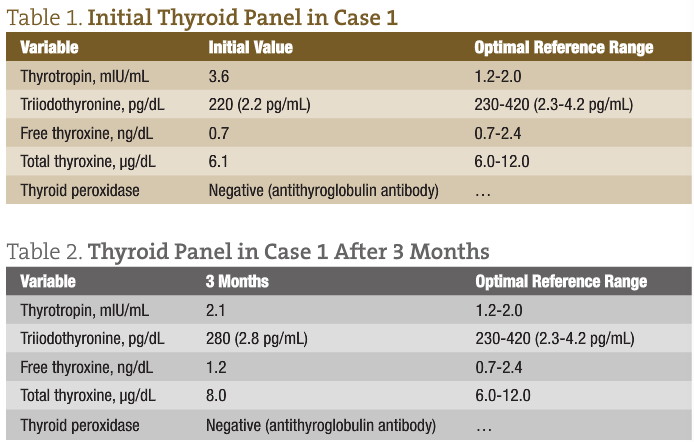Craig Wagstaff, ND; and Karin Wagstaff, ND
As physicians, when we refer to metabolism, we primarily think of metabolic disorders, such as diabetes, gout, or hyperthyroidism. We know that physical exercise and a balanced diet improve metabolic performance. Colloquial phrases that instinctively connect the metabolic process with inner emotional states include “she was sick with envy” or “love has broken her heart.” Mental, emotional, and spiritual trauma affects the physical body. The field of mind-body medicine has grown over the years, with institutes, research centers, and journals expanding and developing our knowledge of this connection. As physicians, we initially focus on visible physical symptoms and conditions, such as detoxifying the body, treating physical traumas and dysfunctions, and feeding the body with good food and supplements. We work at repairing damage done by heavy metals, poor food, exposure to toxins, and low-grade chronic infections, leaving the mental, emotional, or spiritual stress as a secondary consideration. Traditionally, NDs use modalities like Bach flower remedies, homeopathy, or various counseling techniques to facilitate working with this aspect of patient health.
Rubimed remedies (RRs) are produced by Psychosomatic Energetics (Rubimed AG Switzerland, Hergiswil, Switzerland). Psychosomatic energetic therapy represents a new approach to healing. The originator of this method is Dr Reimer Banis (Banis R, et al. Clinical studies of psychosomatic energetics. Explore. June 2004;13[2]). He believes that many chronic conditions are caused by energy blocks. A block in the body’s energy flow can be the cause of disturbed metabolism in a segment or region of the body, resulting in chronic illnesses by interfering with the proper functioning of the autonomic nervous system. The most important are energy blocks caused by hidden emotional conflict. They obstruct energy flow, creating a disturbance at the cellular level that leads to physical symptoms and emotional maladjustment. More often than not, these emotional conflicts are hidden from our conscious awareness. By addressing and healing blocks in the energy flow, a person is able to harmonize and heal on the physical, mental, emotional, and spiritual levels.
The application of psychosomatic energetic therapy operates on the principle that physical, mental, emotional, or spiritual trauma—and who of us has not experienced trauma—can alter how our physical body functions and how the mind perceives the world. Psychosomatic energetic therapy is based on the concept that these unresolved mental, emotional, and spiritual traumas adversely affect the flow of energy in the body. The testing method examines the physical body through the chakra system of energetics. Within each chakra are possibilities of multiple conflicts on the mental, emotional, and spiritual levels that need to be addressed. The psychosomatic energetic therapy system quickly and accurately prioritizes the conflict in most need of resolution according to patient results at the time of testing.
A Brief Overview of the Chakra System of Energy and the Conflicts Associated With Each Chakra
Chakra 1 is the root chakra, representing the gonads. The color is red. Conflicts may include low self-esteem, lack of concentration, helplessness, or extreme self-control.
Chakra 2 is the spleen chakra, representing the adrenals. The color is orange. Conflicts may include nervousness, anxiety, or defiance.
Chakra 3 is the solar plexus, representing the liver, stomach, and pancreas. The color is yellow. Conflicts may include feelings of isolation, repressed emotions, unfulfilled desires, and frustration.
Chakra 4 is the heart chakra, representing the heart and thymus gland. The color is green. Conflicts may include mental overstrain, deep hurt, lack of hope, brokenheartedness, and panic.
Chakra 5 is the throat chakra, representing the thyroid and voice. The color is blue. Conflicts may include frozen feelings, shock, and victimization.
Chakra 6 is the brow chakra, representing the pituitary or “third eye.” The color is indigo. Conflicts may include lack of trust, false pride, physical overstrain, restlessness, tension, and discomfort.
Chakra 7 is the crown chakra, representing the pineal gland. The color is violet. Conflicts may include mistrust, materialism, inability to face reality, and judgmental nature.
Because this article is specifically about metabolism, we will discuss some of our common observations in clinical practice over the years. From the point of view of psychosomatic energetic therapy, stresses and conflicts affect all of us in 1 of the following 2 major ways:
(1) Conflicts physically interfere with the function of different glandular systems, including the pancreas, thyroid, adrenals, and reproductive hormones. As a physician, if your goal is to support the thyroid with glandulars, exercise, and dietary change and the patient has a significant energetic block that is affecting his or her thyroid, it becomes more difficult to help the patient. The unconscious conflict may make the patient frequently forget to take the medication, stick to the diet, or find the motivation to exercise. Progress will be much slower than the patient and practitioner expect to see.
(2) Emotional blockages can facilitate development of a powerful self-sabotage program. An example is a patient with diabetes who wants to control blood glucose levels through exercise and diet but who has difficulty avoiding sugar and maintaining a healthful diet. An alcoholic may want sobriety and all the positive lifestyle and family changes that come with that, but he may continue to frequent the bar daily with his old drinking buddies. An older person with chronic obstructive pulmonary disease may be experiencing low oxygen saturation and using a portable oxygen tank but, despite knowledge of the dangers of fire with oxygen use, continues to smoke a pack a day of cigarettes. Subconscious self-sabotage programs are very difficult for the patient to change without outside intervention.
Psychosomatic energetic therapy gives us a modality to successfully treat unresolved conflicts that is consistently reproducible. The average seemingly well-adjusted individual usually has experienced between 3 and 6 conflicts that require resolution to enable that person to maximize wellness and to find satisfaction in life. Conflicts are life events that negatively affect a person’s psyche, such as divorce, death of a family member or other close companion, loss of a job or an unwanted career change, or traumatic physical injuries. In younger children, what may seem to be an insignificant life change may have an enormous emotional effect on them, leading to a lifetime of emotional conflict. An example is moving away from a familiar neighborhood, with a loss of friends. With psychosomatic energetic therapy testing, we can quickly identify and prioritize (1) the unresolved conflict and the particular emotional feeling behind the conflict and (2) the relative age at which the conflict was activated and the approximate length of time required for resolution of the conflict.
Part of the work for the practitioner is to allow patients to show us what traumas have the most significant effect on their mental, emotional, and spiritual wellness. One of the benefits of the psychosomatic energetic therapy system is that a simple testing method allows patients to tell us which of their traumas has the most pressing need for treatment.
Report of Cases
Case 1
A 40-year-old woman was seen at the clinic with chronic obesity (body mass index [calculated as weight in kilograms divided by height in meters squared] of 32 and weight of 198 lb) that started at the time of menarche. A thyroid panel indicated a hypothyroid state (Table 1).
Complete blood cell count, comprehensive metabolic, and lipid profiles were within normal limits. She had tried various diets and rigorous exercise regimens, with little benefit from either. She would become discouraged and frustrated at the slow progress and end the program prematurely. She was regularly on and off different weight loss plans. When we tested her for RRs, she showed a blockage in the fifth chakra, the energy center of the throat. The endocrine gland is the thyroid, the metabolic master. When the thyroid functions properly, all the other organs with metabolic function are in balance, and the person has energy and a sense of well-being. The energetic key concept is communication, with oneself and others, expressing yourself clearly and speaking your truth, while listening effectively. On the emotional level, the remedy was Emvita 17, to counter the perception that no one hears you, especially among people who have trouble nurturing themselves. When the test results were discussed with the patient and after her tears had stopped, she expressed her belief that nobody had heard her, listened to her, or valued her words ever in her life. She grew up being told that children should be seen and not heard. In her professional and personal relationships, she surrounded herself with stronger personalities that reinforced her belief that she had little of value to say. The unworthiness that she felt had affected her ability to stay on track with her weight loss programs. As she took the RRs, the following 2 major changes became evident:
(1) Her metabolism improved because she was able to continue with her weight loss program and because the remedies were supporting her thyroid and her emotional strength. She was able to take her thyroid supplement for a shorter course of treatment and to obtain better results from it. Once her course of RRs was complete, she was able to taper and finally eliminate the thyroid supplement.
(2) She changed most of her social contacts. She established relationships with a group of people who she felt were interested in what she had to say and who listened.

According to results using the Reba test device from Psychosomatic Energetics, this was a conflict that had manifested in the patient’s early teenage years. To resolve the conflict, the treatment consisted of 2 sets of Chavita 5 and Emvita 17. No other medications or supplements were used. Each set lasted approximately 6 weeks, so the full treatment for this conflict took close to 3 months to resolve. Resolution of the conflict provided her the opportunity to make a major shift in her life. At the 3-month follow-up visit, her body mass index was 29, and her weight was 180 lb. Results of repeat thyroid testing are given in Table 2.
Case 2
A 58-year-old male nonsmoker had recently been diagnosed as having type 2 diabetes mellitus. His body mass index was 24.4, and complete blood cell count, comprehensive metabolic, and lipid profiles within normal limits, except for a slightly elevated triglycerides level, a morning fasting glucose level of 267 mg/dL (14.8 mmol/L), and hemoglobin of 9.8%. The patient had been trying to follow a regimen of diet and exercise to control his blood glucose level and was having difficulty staying away from sugar. He was feeling frustrated that he was not making better progress with reduction of his blood glucose level with the effort he was making. He was also fearful of starting what could become a lifetime of oral hypoglycemic agents or insulin injections. When we tested him for RRs, he showed a blockage in the third chakra, the energy center for the upper abdomen. The endocrine gland is the pancreas. The key energetic concept is with digestion, excretion, and integration. On the emotional level, the remedy was Emvita 11, which relates to feelings of frustration and powerlessness without any sense of well-being. You want to be cared for and feel that somebody loves you. You need to protect yourself and hunger for the nice things in life that could bring you joy. When test results were discussed with the patient, he expressed a lifelong search for joy in life. In his career, he had a need to feel acknowledged and respected for his professional success. In his professional relationships, he was surrounded by people who failed to verbally acknowledge his accomplishments, reinforcing his belief that he gets no respect. As he took the RRs, the following 2 major changes emerged:
(1) His fasting blood glucose level improved with a more effective diet and exercise program. Although he still had a craving for sugar, he was better able to resist the temptation. Over the course of 6 months, the RRs effected a return to homeostasis, allowing him to control his diabetes through diet and exercise alone.
(2) He was also seeing life with a new perspective that included recognizing and appreciating more of the sweetness in his life and requiring less professional validation from coworkers.
According to our testing, this conflict had manifested in his late 20s, and it took 6 months of treatment with the RRs to resolve the conflict (Table 3). For the first 3 months of treatment, we supported his digestion with digestive bitters (20 drops before meals TID) and a probiotic.
Resolution of all his emotional conflicts, both central and those less significant, is an ongoing process that may take up to 2 years.

Conclusions
In 10 years of prescribing RRs, our patients have experienced tremendous gains in achieving wellness. The RRs are a successful method of working with the mind-body connection. These remedies dovetail nicely with other therapies that support the physical body and its ability to cope with mental, emotional, and spiritual stress. We regularly use RRs in conjunction with other therapies, with the added benefit that RRs help make other treatments more effective. The patient often requires a shorter course of other medicines because RRs assist the body back to a solid homeostatic baIance. These remedies have become an integral part of our treatment protocols, benefiting hundreds of patients from age 2 years and older. It is never too late in life to resolve mental, emotional, and spiritual conflicts to live a fuller, richer, and more integrated life.

Dr. Craig Wagstaff, ND, a graduate of NCNM, uses various European natural treatment methods and is always on the lookout for emerging medical developments. He was one of the first North American practitioners to incorporate psychosomatic energetics therapy into his practice. Dr Wagstaff has been practicing for 26 years. His clinic is near Kelowna in Winfield, BC.
 Dr. Karin Wagstaff, ND, is a 2010 graduate of NCNM. Karin brings a combination of knowledge and enthusiasm, for the benefit of her patients’ health and well-being. She offers the most advanced naturopathic therapies for acute and chronic health conditions and welcomes all members of the family, from infants to the elderly, to visit her Winfield practice
Dr. Karin Wagstaff, ND, is a 2010 graduate of NCNM. Karin brings a combination of knowledge and enthusiasm, for the benefit of her patients’ health and well-being. She offers the most advanced naturopathic therapies for acute and chronic health conditions and welcomes all members of the family, from infants to the elderly, to visit her Winfield practice





